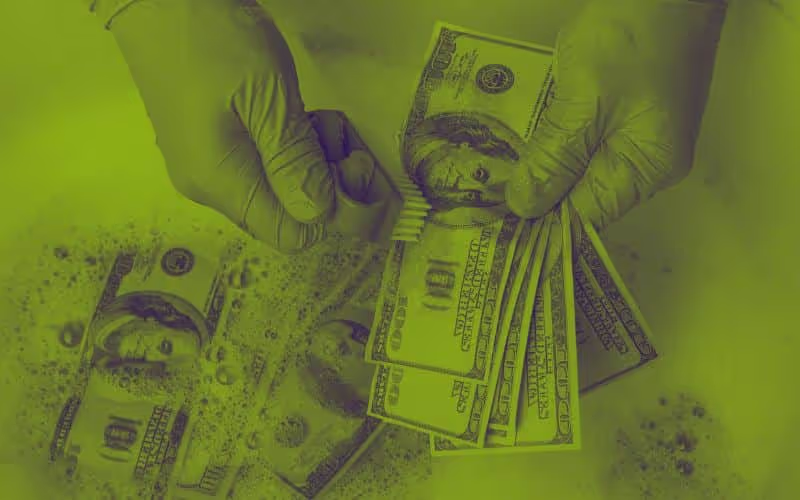
What Is Money Laundering and How Does It Work?
Financial criminals generate profits from their acts and often disguise these proceeds through money laundering, enabling criminal parties to use their funds without jeopardizing their activities. According to the United Nations Office on Drugs and Crime, between EUR 715 billion and 1.87 trillion is laundered every year (2-5% of the global GDP). The changing global risk landscape, including the advent of innovative fintech start-ups, virtual payments and cryptocurrencies, requires a fresh approach and stricter controls than ever before.
In light of increasing concerns, in 2021, the European Commission has set out a package of legislative proposals to strengthen already stringent Anti-Money Laundering rules, including the proposal for the creation of the EU anti-money laundering authority (AMLA).
While these initiatives have been welcomed by governments and financial institutions, it has also placed considerable additional responsibility firmly in the hands of businesses in terms of Know Your Customer (KYC) protocols and other AML procedures. To best understand potential risks, firms must familiarise themselves with money laundering and possible indicators that new or existing customers may be involved with money laundering.
What Is Money Laundering?
Money laundering is defined as the process by which criminals camouflage the origin and ownership of the proceeds of unlawful activities, including embezzlement, drug trafficking, or cybercrime. Money laundering enables criminals to transform the profits from criminal activities into funds of apparently legal origin using a three-stage process: placement, layering, and integration.
Placement
Placement is the first stage of money laundering. This involves placing unlawful proceeds into financial institutions through wire transfers or deposits (or other means). Illicit funds can enter the financial system through casinos, retailers, banks or other businesses. Criminals either break up large amounts into smaller sums before making numerous deposits to escape detection, travel across borders to deposit funds in financial institutions abroad or purchase precious goods, including artwork, gold, or antiques that can be resold.
Placement is often the most vulnerable stage of money laundering as the criminals are holding on to a large volume of cash.
Layering
Layering users repeated and continual placement and extraction, using various amounts each time, in order to make it more difficult to trace transactions and gradually add legitimacy to the funds. It often involves multiple financial intermediaries and transactions to evade AML checks, including changing the money’s currency, “smurfing”, conducting multiple structured deposits and inter-bank transfers, purchasing high-value goods and properties, or completing wire transfers between multiple accounts in multiple locations. Criminals may also create shell or ghost companies with convoluted corporate structures to hide their identity and transfer funds or use the money “mules” to move funds. Companies need to keep a close watch on the way money moves between accounts to detect layering.
Integration
During the integration stage, funds are reintroduced to the economy with the appearance of being legitimate. The money is “cleaned”, invested, and profits are drawn. This stage is the most complex, and it can be extremely difficult to distinguish between legal and illegal funds. Integration can take the form of business investments, purchases, or asset sales (using items or properties purchased during the layering stage).
Red flags for integration can include property dealing, front companies, large fraudulent loans extended to companies from sources unrelated to their business, falsified invoices or even foreign bank complicity.
Impact Of Money Laundering On Financial Institutions
Money laundering causes significant harm to banks and other financial institutions. Money laundering often occurs at high rates. Criminals drain the funds they place with these institutions, causing not only other reputational harm but harm to their bottom line. It undermines the trust in these institutions and in the financial sector in general, leading to a potentially devastating economic fallout.
What Should Businesses Do to Combat Money Laundering?
Businesses should familiarise themselves and their staff with the warning signs of money laundering and ensure that they are performing their due diligence when onboarding and identifying customers.
A few steps to consider:
- Create a financial crime management framework driven by the company’s risk assessment and day-to-day operations. Controls implemented should monitor the entire process as relevant to the business.
- Ensure that the company has a clear technology plan in place pertaining to client identification, transaction monitoring, and sanctions checks. Data sets are too large for manual review, and the risk of non-compliance is far too great to rely on processes that may be impacted by human error (or possible collusion).
- Use accurate and trusted third-party PEP and sanctions lists screening solutions as these can affect the underlying rationale and accuracy of the algorithms deployed to monitor trends, transactions and behavior.
- Train staff to spot the red flags for money laundering, as well as how to respond to these flags.
- Regularly review and reassess internal controls and procedures as part of a robust AML compliance program and in response to shifting AML regulations and best practices.
- Ensure that risk management and financial crime teams have the resources at their disposal to effectively manage financial risk and anti-money-laundering practices within the firm.
Conclusion
The EU will continue to pile pressure on member states to implement and improve AML directives. Companies need to understand money laundering, as well as the red flags and warning signs that may indicate money laundering, and implement comprehensive detection, evaluation and monitoring controls to become and remain compliant.
To learn more about how sanctions screening can help businesses combat money laundering, sanctions.io's Ultimate Sanctions Screening Guide is an excellent resource.
While preventative guidelines seem challenging, utilizing advanced AML screening solutions like sanctions.io can effectively combat money laundering without impacting operations. Start your free trial today.



